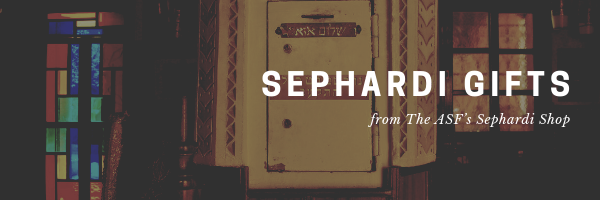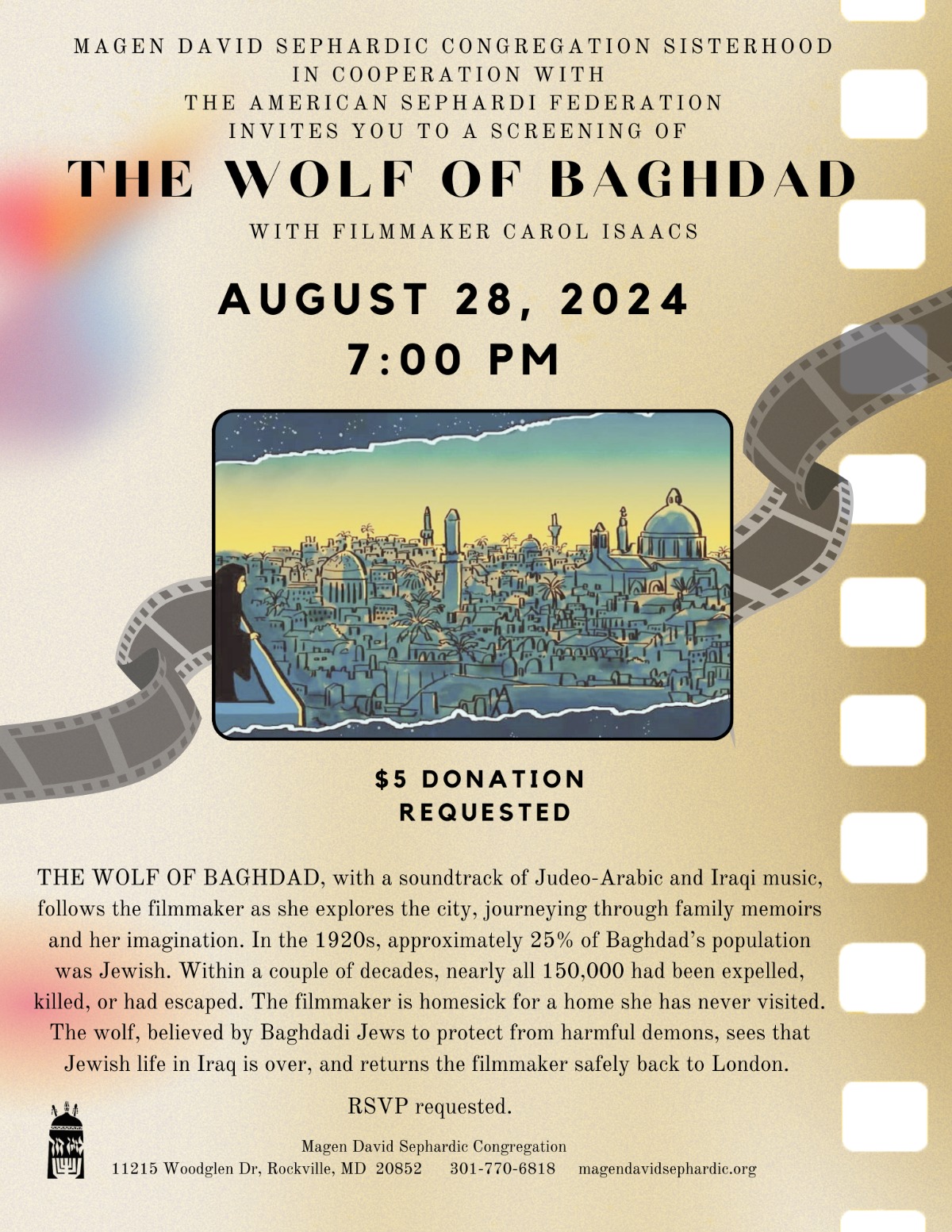In Honor of the 61st Birthday of His Majesty King Mohammed VI, the King of Morocco and Amir Al-Mouminine (Commander of the Faithful)
Click here to dedicate a future issue in honor or memory of a loved one
Subscribe ◊ Upcoming Events ◊ ASF Sephardi Shop ◊ Donate ◊ Sephardi Ideas Monthly ◊ ASF IJE ◊ ASF Sephardi House ◊ Archive
The Sephardi World Weekly is made possible by Daniel Yifrach, Rachel Sally, Professor Rifka Cook, Maria Gabriela Borrego Medina, Rachel Amar, Deborah Arellano, & ASF VP Gwen Zuares!
Don't miss the latest Sephardi Ideas Monthly: “Emet ve Emunah: The Secret of the Sassoons’ Success”
~~~~~~~
“Queenie Hallegua, second-to-last Jewish resident of historic Indian Jewish community, dies at 89”
By Andrew Silow-Carroll, JTA
Queenie Hallegua
(Photo courtesy of The New Indian Express)
In the 1950’s, approximately 3,000 Jews lived in “Jew Town,” home to the Jewish community of Kochi (Cochin), India. After the recent passing of Queenie Hallegua, only one Jew, Queenie’s nephew Keith, remains.
According to tradition, Jews began arriving in Kochi on the Malabar Coast along India’s southwestern tip during the reign of King Solomon. Mention of the Malabari community of Jews appears in the 12th century writings of Benjamin of Tudela.
Sephardi Jewish refugees began arriving in Kochi after the late 15th century expulsions from Spain and Portugal. The new arrivals came to be known as “the Paradesis,” Paradesi meaning “foreign” in Malayalam and Tamil.
Jews from Baghdadi then added to Kochi’s multi-cultural Jewish mix in the 19th century.
Queenie Hallegua was connected to the Paradesi and Baghdadi Jewish communities. She served as “the warden and managing trustee of the Paradesi Synagogue, a 450-year-old landmark, from 2012 to 2018,” while also working as managing partner, until 2011, “of the S. Koder House, a boutique hotel in a house once owned by her grandfather, Shabdai Samuel Koder, an Iraqi immigrant who settled in Kochi in the early 20th century and later owned the local electric company.”
One of the highlights of Hallegua’s service to the Jewish community featured “Queenie and her late husband Sammy hosting Queen Elizabeth and her husband, Prince Philip, when they came to the Paradesi Synagogue in... October 1997.”
In a 2022 interview, Halleghua recalled the queen’s admiration for the synagogue with evident relish:
We were overjoyed…She was impressed by the architecture and the history of the synagogue. When we told her that the tiles inside were 18th-century, hand-painted ones imported from Canton [Guangdong] in China, she exclaimed it was wicked to walk on them. My husband and I could not hide our smiles.
“ASF President Dangoor on Forgotten Jewish Refugees”
ASF President David E.R. Dangoor, Remembering the Forgotten Jewish Refugees, Moise Safra Center, 28 November 2023
(Photo courtesy of Zak Siraj)
Speaking at the World Jewish Congress and American Sephardi Federation’s “Remembering the Forgotten Jewish Refugees” 30 November event, ASF President David E R Dangoor wove stories from his childhood home where east met west together with Arab-Jewish friendships forged in Iraq to the different ways in which people remember the refugee experience. Dangoor emphasized that the Jewish way is to begin life anew, and he encouraged his audience to tell the story of the 800,000 Jewish refugees from the Middle East and North Africa, with an accent on the right of Israel to exist exactly where it is.
“Book Review: Jews, Food, and Spain: The Oldest Medieval Spanish Cookbook and the Sephardic Culinary Heritage”
By Regina Igel, Sephardic Horizons
Hélène Jawhara Piñer, The Golden Age of the Jews of Al-Andalus Exhibit Inauguration, Paul S. And Sylvia Steinberg Great Hall, ASF - Center for Jewish History, 11 April 2024
(Photo courtesy of Zak Siraj)
Professor Emerita of Spanish and Portuguese at the University of Maryland, Regina Igel, praises and traces the internal progression of Prof. Hélène Jawhara Piñer’s three-part Jews, Food, and Spain: The Oldest Medieval Spanish Cookbook and the Sephardic Culinary Heritage.
An ASF Broome & Allen Fellow, Piñer makes a case in delicious detail for including Iberian Jewish culinary customs as a key ingredient for marking the “ways in which the Sephardim and their cultural legacy are identified.” That Piñer finds Iberian culinary history hiding within “accusations against the conversos” and in the offhanded descriptions of Kitab al-Tabih (“The Book of Cooking”) is central to her book’s charms.
~~~~~~~
By Dr. Hélène Jawhara Piñer, a 2018 ASF Broome & Allen Fellow
In this extraordinary, award-winning and best-selling cookbook now in its 4th imprint, chef and scholar Hélène Jawhara-Piñer combines rich culinary history and Jewish heritage to serve up over fifty culturally significant recipes. Steeped in the history of the Sephardic Jews (Jews of Spain) and their diaspora, these recipes are expertly collected from such diverse sources as medieval cookbooks, Inquisition trials, medical treatises, poems, and literature. Original sources ranging from the thirteenth century onwards and written in Arabic, Spanish, Portuguese, Occitan, Italian, and Hebrew, are here presented in English translation, bearing witness to the culinary diversity of the Sephardim, who brought their cuisine with them and kept it alive wherever they went. Jawhara-Piñer provides enlightening commentary for each recipe, revealing underlying societal issues from anti-Semitism to social order. In addition, the author provides several of her own recipes inspired by her research and academic studies.
Each creation and bite of the dishes herein are guaranteed to transport the reader to the most deeply moving and intriguing aspects of Jewish history. Jawhara-Piñer reminds us that eating is a way to commemorate the past.
~~~~~~~
Upcoming Events or Opportunities
Magen David Sephardic Congregation Sisterhood in cooperation with the American Sephardi Federation present:
THE WOLF OF BAGHDAD
Film screening with the filmmaker Carol Isaacs
Dror will take us on a beautiful journey around Yemen, Spain and North Africa from the 10th century until today, through songs of spirit and awe, songs of thanks and songs of love and hope.
Singing and chanting Jewish songs in Hebrew, Arabic and Aramaic, we'll explore
Wednesday, 28 August at 7:00PM EDT
Sign-up Now!
RSVP Required
Tickets: $5 Donation
Magen David Sephardic Congregation
11215 Woodglen Dr, Rockville, MD 20852
For questions and more details please call 301-770-6818
The Wolf of Baghdad, with a soundtrack of Judeo-Arabic and Iraqi music, follows the filmmaker as she explores the city, journeying through family memoirs and her imagination. In the 1920s, approximately 25% of Baghdad's population was Jewish. Within a couple of decades, nearly all 150,000 had been expelled, killed, or had escaped. The filmmaker is homesick for a home she has never visited.
The wolf, believed by Baghdadi Jews to protect from harmful demons, sees that Jewish life in Iraq is over, and returns the filmmaker safely back to London.
~~~~~~~
The American Sephardi Federation presents:
“The Golden Age of the Jews of Alandalus” | “La Edad de Oro de los judíos de Alandalús”
On View in the Paul S. And Sylvia Steinberg Great Hall
through August 2024
@ the Center for Jewish History
The Jewish community of Alandalús gave the world extraordinary thinkers like Maimonides, diplomats like Ibn Shaprut, and poets like Ibn Gabirol and Judah Halevi, whose wisdom, works, and accomplishments resonate through the ages. 820 years after his death, the RAMBAM’s contributions to medicine, philosophy, diplomacy, and Jewish law continue to inspire wonder and influence till today. Across the Mediterranean in Fustat (Cairo) about two hundred thousand documents accumulated in the Ben Ezra Synagogue’s Genizah—a room or grave where obsolete sacred documents are respectfully discarded—over the course of nearly a millennium.
The geographical location of Egypt, a natural bridge between the Islamic East and Christian West, made it possible for many of these documents to be of Andalusian origin. This exhibition, curated by the University of Granada Professor José Martínez Delgado, takes us on a journey from the origins of this important community to its exodus and extinction in the XIX century. Although subsequently scattered all over the world, Sepharadim have maintained connections to their past by perpetuating traditions, the Ladino (Judeo-Spanish) language, and exemplifying a seriously Jewish yet cosmopolitan worldview.
~~~~~~~
The American Sephardi Federation presents:
Convergence: Arabic, Hebrew, and Persian Calligraphy in Conversation
Featuring the multilingual art of Ruben Shimonov Convergence creates a visual world where Hebrew, Arabic, and Persian languages interact with, and speak to, one another; a world where stylized letters and words dance together on the page; a world where cultures, religions, communities, and philosophies intersect.
Juxtaposing cognates from these ancient West Asian languages, artist Ruben Shimonov encourages the viewer to explore the deep-rooted connections between these tongues, as well as the multilayered and transnational identity of the artist himself.
On View in the Leon Levy Gallery
through August 2024
@ the Center for Jewish History
~~~~~~~
The American Sephardi Federation and Mimouna Association’s Rebuilding Our Homes Project present:
Re-Creation: Judaica by Moroccan Muslim Artisans
Explore the exhibition of Judeo-Moroccan art, Moroccan Judaica, cultural and religious objects, including Menorot, Mezuzot, Yads, Shabbat Candleholders, Seder Plates, Hallah Covers, and much more.
On View through August 2024
@ the Center for Jewish History
As Moroccan Jewish populations largely left the mellahs (Jewish quarters) in the latter half of the 20th century, there was a danger that not only designs but even the traditional artisanal techniques needed to create them would be lost. Passed down from one artisan to another and perfected over time, these designs and techniques. ranging from vibrant patterns to intricate metalwork and soulful wood carvings, are expressions of Moroccanity and reflect the individual character of each city. The materials and craftsmanship of Rabat are different than Fez, and Essaouira is distinct from both.
Mimouna Association and the American Sephardi Federation’s Rebuilding Our Homes Project, a multi-year USAID-supported New Partnerships Initiative, brought three notable experts-Ms. Zhor Rehihil, Ms. Deborah Koenigsberger Gutierrez, and Ms. Meryem Ghandi to train Moroccan Muslim artisans in the history of Judeo-Moroccan art and guided them in re-creating Moroccan Judaica, which encompasses a diverse array of cultural and religious objects, including Menorot, Mezuzot, Yads, Shabbat Candleholders, Seder Plates, Hallah Covers, and much more.








